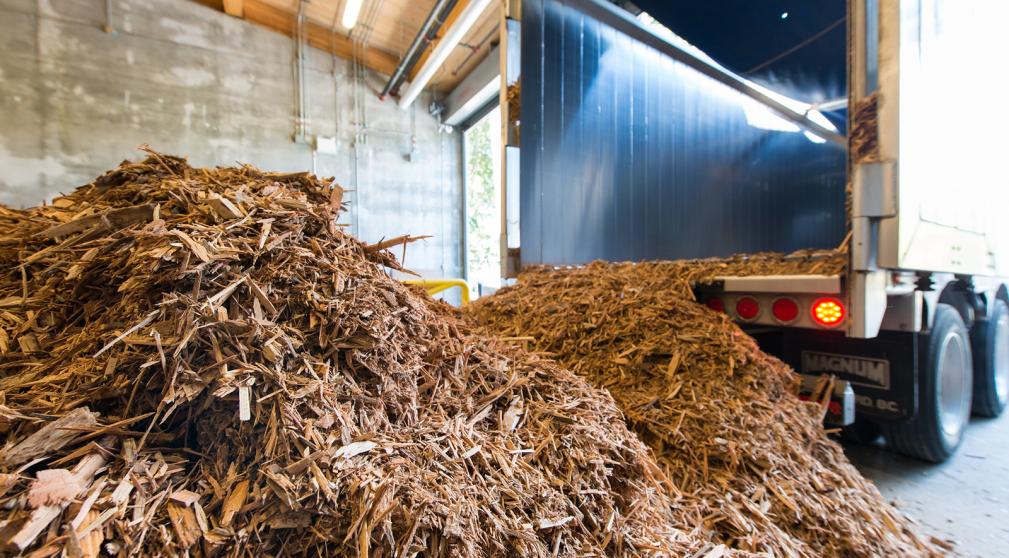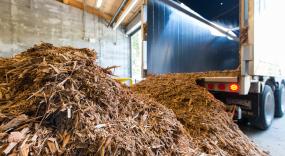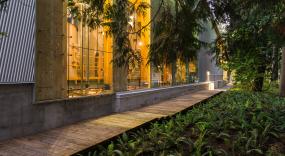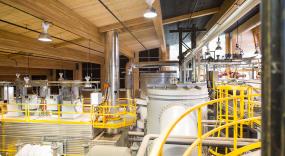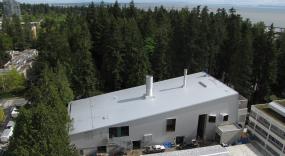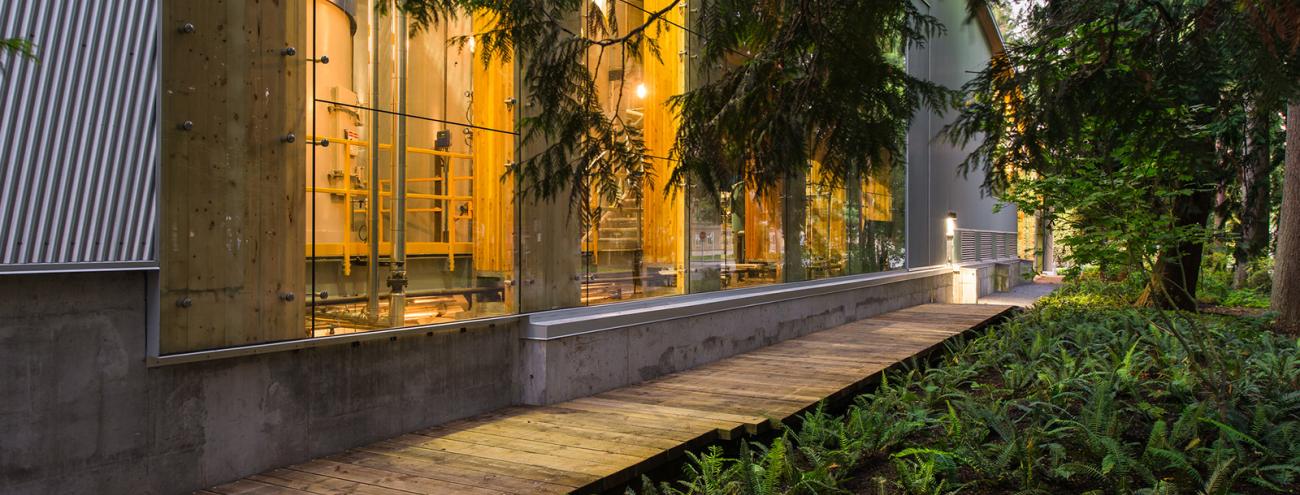
Bioenergy Research Demonstration Facility
The Bioenergy Research Demonstration Facility produces renewable energy for UBC’s campus using wood waste biomass. This helps reduce UBC’s GHG emissions and supports research projects on innovative clean energy systems.
Like many communities around the world, UBC is striving to meet its energy needs while reducing its impact on the environment. The Bioenergy Research Demonstration Facility (BRDF) responds to this challenge while demonstrating small-scale power production that is relevant and replicable in other communities.
In addition to generating energy for the UBC campus, the BRDF is also a Campus as a Living Lab project integrating our core academic mandate of research and teaching with infrastructure and operations.
Take a 360 degree tour
This interactive tour is packed with interpretative information. Walk around the building and explore multiple rooms and areas. Look out for red hotspots to find out more about how the facility operates, and learn about the ongoing research program.
Virtual tour of the Bioenergy Research and Demonstration Facility
Turning wood waste into thermal energy
Located at the UBC Vancouver campus, the Bioenergy Research and Demonstration Facility is an energy generation facility that processes renewable biomass sourced from urban wood waste and transforms it to generate thermal energy for heating campus buildings.
After a recent expansion the facility underwent in 2021, the BRDF now produces 20.4 MW of thermal energy. The expanded facility generates the majority of UBC’s thermal energy through biomass and fulfills 100% of the UBC campus’s heating and hot water needs for 8-9 months of the year. The BRDF also produces 2 MW of electrical energy through a co-generation engine fuelled by renewable natural gas, that accounts for 5% of the total campus electricity requirements each year.
The expansion project included the installation of a new boiler system with an additional capacity of 12 MW of thermal energy, as well as a new and expanded biomass delivery system and a larger biomass storage bunker. The combined heat and power demonstration system that conditioned synthesis gas from the gasification process to be used as fuel for a cogeneration engine, and which was stopped due to equipment failure, was also removed to make room for the new boiler system.
The building that houses this facility features an innovative mass timber structure, consisting of cross-laminated timber (CLT) floor, walls and roof, and glue laminated (glulam) columns and beams attached through steel connectors. It was recently expanded to make room for the new systems that were installed as part of the expansion project. This was one of the first industrial buildings in Canada to be constructed with CLT panel technology, mostly from regionally sourced lumber and fabricated locally.
Reducing greenhouse gas emissions
The BRDF is a key contributor to UBC’s greenhouse gas (GHG) emissions reduction efforts through switching from natural gas use to biomass and reducing reliance on fossil fuels. Furthermore, the biomass used at the BRDF consists of ground and chipped wood waste mainly from sawmill residuals and municipal trimmings that would otherwise go to a landfill.
The amount of carbon dioxide released by the wood waste used as fuel is the same as would be released if it was left to decompose in the landfill but with the benefit of producing energy, which makes this process carbon neutral.
The facility displaces around 14,500 tons of emitted fossil fuel-based CO2 annually and 53% of energy consumption in the Vancouver campus is now from low-carbon sources. In total, UBC has reduced GHG emissions per student by 48% compared to 2007 emission levels.
The building’s structure contains around 698 cubic meters of mass timber that store 627 tons of CO2. According to the Canadian Wood Council Carbon Calculator, choosing a mass timber structure for this building avoided the emission of 243 metric tons of CO2, the equivalent of taking 184 cars off the road for a year.
By showcasing the application of CLT panel construction for an industrial building, the BRDF became an example of a viable renewable material alternative for non-combustible structures.
Integrating research, operations, and education
Winner of the International District Energy Association (IDEA) Award for Innovation, UBC’s Bioenergy Research and Demonstration Facility integrates research, operations and innovative technologies into a single facility.
The original facility featured an on-site laboratory that allowed researchers to use the biomass supply, syngas, and system by-products for research purposes, as well as using the facility’s systems as a case study to advance bioenergy production. Capitalizing on this opportunity, the expansion project was coupled with funding from the Canadian Foundation for Innovation (CFI) to build the Biorefining Research and Innovation Centre (BRIC) adjacent to the facility. The BRIC will allow researchers to develop new technologies and bioproducts at an industrially-relevant scale. The centre will house state-of-the-art reactors and testing equipment for converting biomass into value-added products, as well as lab and office space for grad students. The BRIC building will be separate from the operational plant but will continue to access the syngas from the gasifier for use in experiments. Research will be led by UBC faculty members from the Faculty of Applied Science and the Faculty of Forestry.
The BRDF has engaged students, researchers, faculty and staff on all levels to learn about UBC’s energy systems and further their studies. More than 1,000 people tour the biomass facility each year to learn about the technology, the building and how this unique facility supports campus life.
This integration of operations and academics challenges the campus community to work across traditional boundaries and sectors to affect change, exactly what this Campus as a Living Lab project strives to achieve.
Resources
Partners
Infrastructure and Development, UBC Facilities
is responsible for the planning, development, renewal and renovation of campus facilities and infrastructure. They provide stewardship for all institutional facilities projects.
Energy & Water Services
generates, distributes and conserves UBC’s energy and water resources by maintaining environmental comfort, ensures system reliability, minimizes life cycle cost, reduces GHG emissions, and seeks out innovative solutions.
